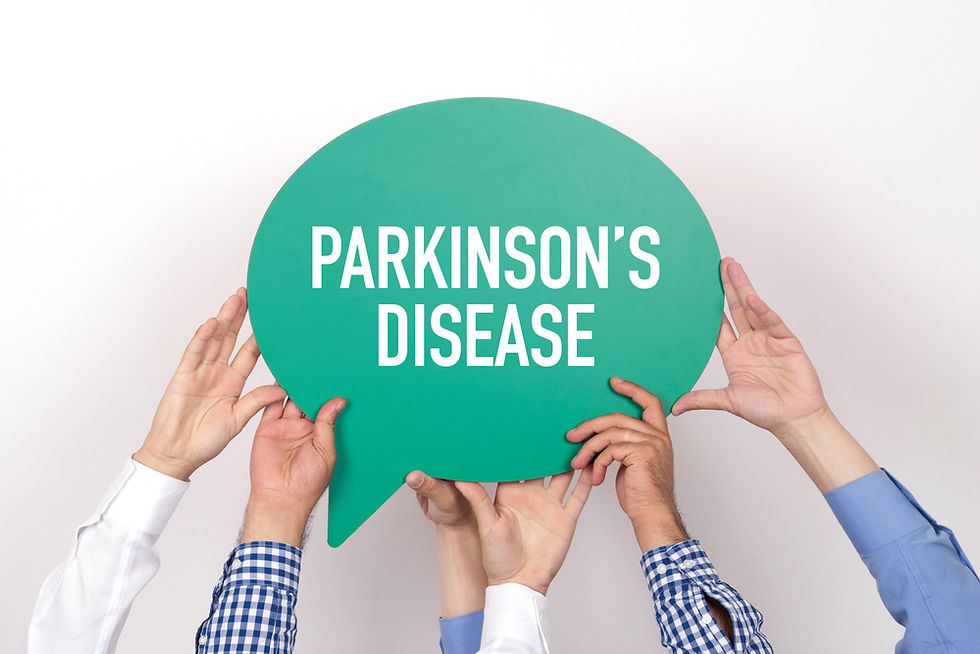
90% of people with Parkinson's Disease will have speech and voice changes. Typical symptoms include low speech volume, a faster speech rate and slurred speech. These changes can worsen over time making it hard for others to understand them. This can be very frustrating and socially isolating.
Fortunately, there are evidence-based treatments for speech and voice changes in Parkinson's Disease. With intensive therapy, people with Parkinson's can regain clear speech and a good-quality voice of adequate volume.
However, there are challenges. While patients can make great progress, they need to continue to practice in order to maintain gains from therapy. Otherwise, their speech will revert back to how it was pre-therapy.
In this post, we take a look at the intensive treatments that can improve speech in Parkinson's Disease as well as ways to help maintain therapy gains.
Intensive Therapy/Behavioural Treatments
LSVT LOUD (Lee Silverman Voice Therapy)
LSVT® LOUD is a behavioural treatment with strong clinical efficacy data with individuals with Parkinson’s disease. It is designed to address the soft voice and unclear speech of individuals with Parkinson's Disease. LSVT® LOUD is intensive: four one-hour training sessions per week over the course of one month, for a total of 16 sessions.
Group therapy is not an integral part of the LSVT LOUD program but it is encouraged following treatment in order to maintain therapy gains.
Watch Bob speak about his experience of LSVT and how he maintains his gains from therapy.
SPEAK OUT!
SPEAK OUT! combines speech, voice, and cognitive exercises. It places emphasis on speaking deliberately or with intent. It is a two-part training course that includes individual therapy sessions (SPEAK OUT!) and group therapy (The LOUD Crowd).
The individual therapy consists of twelve 40-45 minute sessions. When the patient has completed the individual SPEAK OUT! therapy sessions they then transition into the LOUD Crowd. The LOUD Crowd is a maintenance program which consists of weekly group sessions. Watch this video to learn more about SPEAK OUT!
Ways to Maintain Therapy Gains
The Ambulatory Phonation Monitor

The Ambulatory Phonation Monitor (APM) is a portable device worn by a client in order to monitor how they use their voice throughout the day. This helps the clinician find out whether or not the client is maintaining gains from intensive therapy.
The APM device can also help clients maintain an adequate volume/a louder voice outside of the clinic environment via the use of real-time vibro-tactile feedback.
Due to cost, this device is perhaps more suited to clinics undertaking research than individual home users at present.
Visual Feedback
The LSVT Companion (client edition) provides personalised LSVT LOUD home practice during and after treatment. It offers real-time feedback on goals and displays loudness, pitch and duration measures to motivate the client.
Vocal Loudness Apps
There are a range of vocal loudness apps that measure volume and provide visual feedback on loudness level. See previous blog post on apps for Parkinson's Disease for full list.
The downside of some vocal loudness apps is that they don't reliably measure volume. As a result, it is hard for the user to know if they are being loud enough. More reliable options include Voice Analyst and Loud & Clear.
Clients could use these apps at home to self-monitor their speech and voice. Ideally, they would incorporate them into their daily practice. They should also try to be the same distance from the iPad each time they practice for consistency when measuring. A distance of 30cm is usually adequate.
Audio Feedback
Encourage clients to audio-record part of their home practice and to listen back to it as a way of self-monitoring. The client should try to maintain the same distance from the iPad or audio-recording device each time for consistency. A distance of 30cm is usually adequate. Also encourage clients to record conversations with a spouse, family member or friend so that they can compare their volume and strength of voice to the other person (assuming that the other person has adequate volume!).
There are many available recording apps for iPad including QuickVoice, Smart Recorder and iTalk Recorder.
Train Family Members
A supportive spouse can be hugely helpful. People with Parkinson's can lack motivation due to decreased dopamine levels so the more praise and encouragement they get from others the better! Remind spouses and family members to praise the person for the progress they have made (especially after intensive therapy). Encourage them to help the person with Parkinson's Disease establish a practice routine/schedule and to participate in some homework tasks with them.
Other Treatment Options
Early intervention is best. People with mild to moderate speech and voice changes will typically make the most gains following intensive therapy. Individuals with more moderate to severe speech and voice changes who have intensive therapy may make some gains. However, they will often have difficulty carrying over clearer speech and a louder voice into everyday conversation.
Some individuals may not be suitable for an intensive therapy approach. Tools to compensate for their speech and voice problem may be the most suitable treatment option. You can find out more about the tools that can help here.
We hope you have enjoyed reading this blog post. Please feel free to share your experiences by commenting. If you'd like to read more blog posts like this, why not sign up for our free e-newsletter? We promise not to spam you and you can unsubscribe at any time.


Thanks for a great read